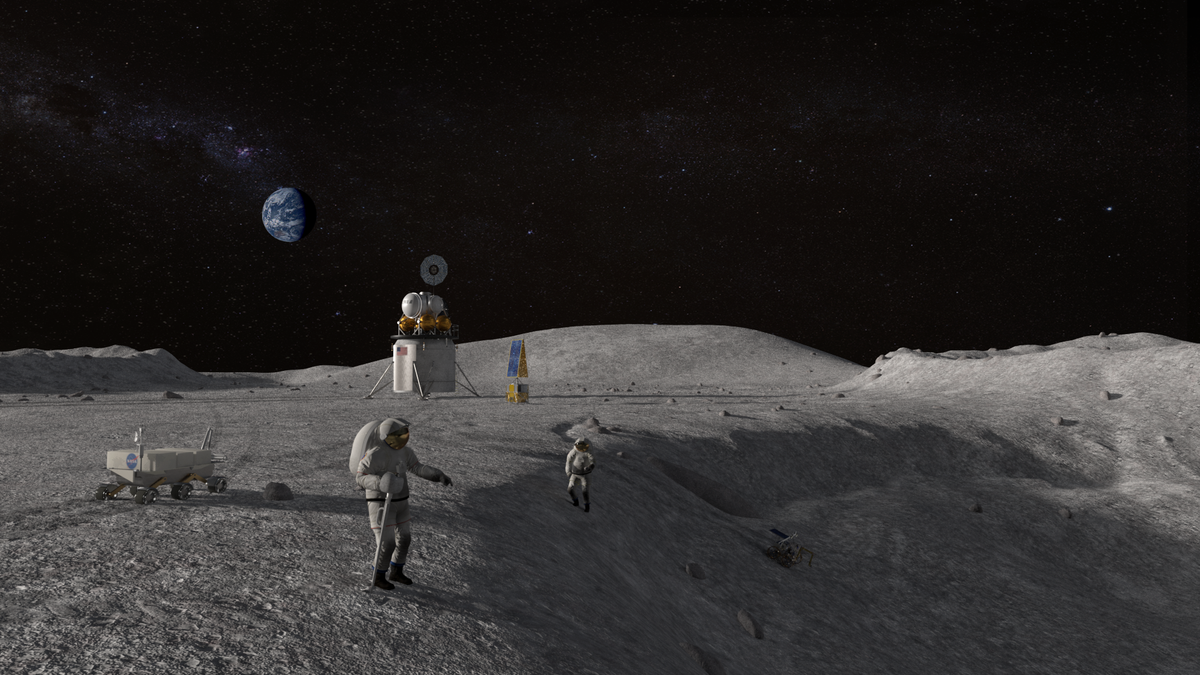
The Moon is so hot right now, metaphorically speaking. Several US government agencies, private space ventures, and foreign governments like China are plotting for mankind’s return to the lunar surface over the next decade. Unlike the days of Apollo, the modern-day race to the Moon involves establishing a sustainable presence and a thriving economy on and around Earth’s natural satellite.
In an attempt to guide ongoing efforts in establishing a lunar infrastructure, the Defense Advanced Research Projects Agency (DARPA) kicked off a seven-month study dedicated to developing an analytical framework for scientific and commercial activity on the Moon. Through the 10-Year Lunar Architecture, or LunA-10, study, DARPA is seeking ideas for technology and infrastructure concepts that could help build a Moon-based economy within the next decade.
“A large paradigm shift is coming in the next 10 years for the lunar economy,” Michael Nayak, program manager at DARPA’s Strategic Technology Office, said in a statement. “To get to a turning point faster, LunA-10 uniquely aims to identify solutions that can enable multi-mission lunar systems – imagine a wireless power station that can also provide comms and navigation in its beam.”
As the Pentagon’s research and development arm, DARPA is collaborating with NASA on the study as a way to compliment the space agency’s Moon to Mars objectives. NASA wants to use the Moon as a test bed for Mars, developing ways through which humans can survive for long periods of time on a surface other than Earth’s. “Opportunities for technology maturation are key for development for lunar capabilities in order to meet the objectives of future lunar architectures,” Niki Werkheiser, director of Technology Maturation at NASA’s Space Technology Mission Directorate, is quoted as saying in DARPA’s statement.
Luna-10 will select a group of companies that have an idea for lunar services, allowing them to work together to develop an integrated system for lunar communication, energy, transmission or other building blocks necessary to create a future economy on the Moon. The participating companies will be announced in October 2023, with the final report due by June 2024.
DARPA, however, will not fund the construction or transportation of any of the concepts developed as part of the study. Instead, the agency will provide its “economic expertise to all LunA-10 teams to help analyze and validate definitions of a critical mass to create a thriving, survivable lunar economy,” DARPA wrote in its statement.
There are more than 400 missions that are anticipated to launch to the Moon between the year 2022 and 2032, according to the European Space Agency. Increased access to the lunar surface for both robotic and crewed missions not only opens up opportunities for scientific research, but also allows for industrial utilization of the Moon by mining mineral resources or establishing lunar tourism. There are concerns regarding the commercialization of the Moon, however, mainly to do with the lack of a proper framework (at least for now) to govern the distribution of resources and to ensure that mankind doesn’t alter the celestial body.
In its statement, DARPA highlights that LunA-10 is grounded in the Outer Space Treaty established in 1967 and that “all developments and involvement by civilian and/or military personnel in this effort pertain to scientific and peaceful purposes.”
This isn’t DARPA’s first attempt to get involved in the growing space economy. Last year, as part of its Space-Based Adaptive Communications Node (Space-BACN) program, the agency brought together a team of experts to standardize communications between the increasing number of satellites in Earth orbit. Earlier in May 2022, DARPA got two satellites to communicate directly with each other using space lasers. DARPA is also seeking to build a constellation of small satellites in low Earth orbit for the purpose of supporting military operations.
For more spaceflight in your life, follow us on Twitter and bookmark Gizmodo’s dedicated Spaceflight page.





